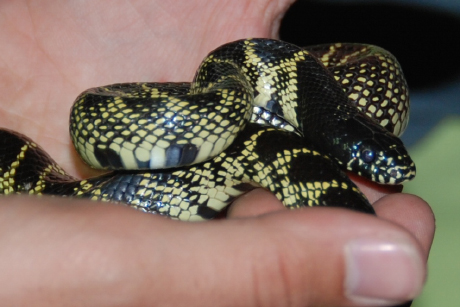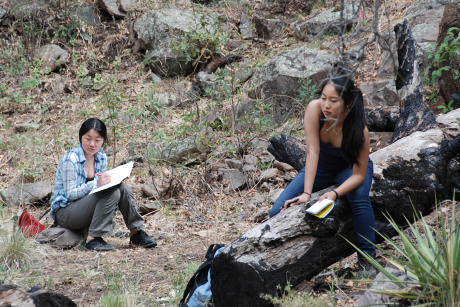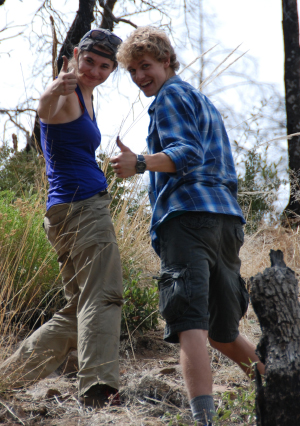Grad students master mentoring in Arizona field course
By Kathy Hovis


The experiments and observations taking place in the wilds of Arizona earlier this summer weren’t only of wild critters and plants. They were also of graduate students, as they learned from faculty members Jed Sparks and Harry Greene how to teach field courses to undergraduates.
Three grad students and 12 undergrads ventured with Sparks and Greene (both professors of ecology and evolutionary biology) into southeastern Arizona in early June for the 10-day course Deserts, Snakes and Mentorship in the Field. Strapping on Kevlar leg protectors and sunscreen, they studied animal and plant life in this unique area.
“This region has an extreme elevation gradient, so you can go from the driest desert and in 10,000 feet be in an alpine forest,” Sparks said. “This part of Arizona is legendary for research because you have subtropical species merging with temperate species, both with animals like rattlesnakes and lizards and in plants.”
“We go on a driving tour then get into the field and the students start asking questions: Why are lizards doing this behavior? Why would plants be growing in this space? What kinds of animals are supported by this habitat?” Sparks added.

Usually it doesn’t take long for an interesting project to emerge. The students then come up with a testable hypothesis using the scientific method and get to work on observations and experiments. Toward the end of the 10 days, they have an additional 10 days to complete their projects before they present their work to each other, while still in Arizona.
“This course was incredibly rewarding for me because it was one of the only times in graduate school that I received formal training in mentoring,” said Rayna Bell, Ph.D. ’14, a graduate student on the trip. “It was very useful to stop and think about my mentoring style and how I can be a better mentor for students in the classroom, in the laboratory and in the field.”
Yitong Li ’15 and three other students spent their days observing the feeding behaviors of lizards living near a creek bank, hoping to discover how the distance from the creek affected the diversity of insects available for the lizards to munch on.
“The field course gave me – a typical city girl – lots of hands-on experience that I could never learn from lectures,” said Li, a biological sciences major.
When they’re exposed to field courses and research, Sparks said, most undergrads either “hold onto a research project with the icy grip of death” or realize they’re in the wrong area.
“This is simply the best way to teach biology to 18-year-olds,” Sparks said about field research. “All learning, whether in biology or English, hinges on the engagement of the mind, and the worst way to do that is through a lecture. Teaching in the field is 100 percent active.”
For the graduate students, the mentorship of veteran field professors Sparks and Greene was invaluable.
“It was really beneficial to have evening check-ins with the faculty to discuss where groups and projects were succeeding, and how to manage any bumps in the road,” said Benjamin Johnson, a doctoral student in the field of ecology and evolutionary biology. “It was an effective exposure to many facets of mentoring students both individually and in groups, all the way from fostering research questions to managing interpersonal issues.”
Kathy Hovis is a writer for the College of Arts and Sciences.
Media Contact
Get Cornell news delivered right to your inbox.
Subscribe